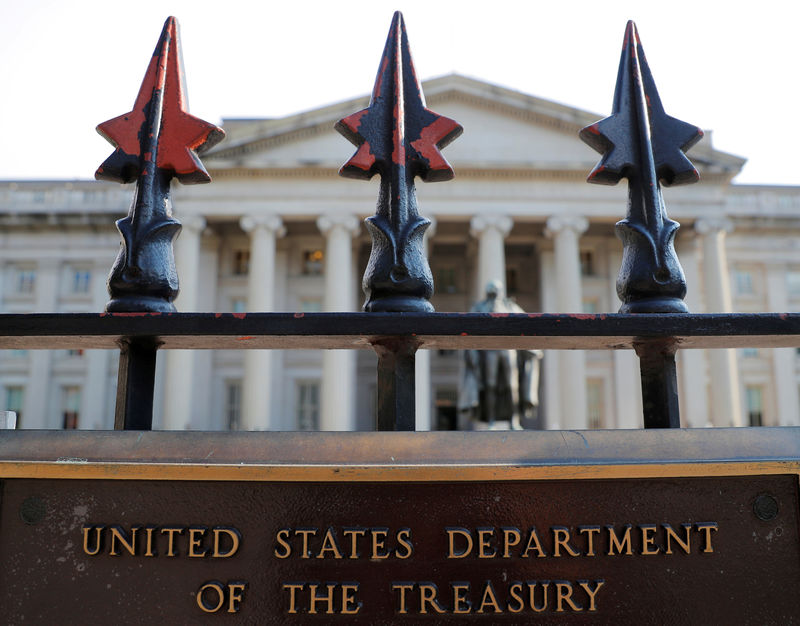LONDON (Reuters) - U.S. Treasury yields fell on Monday but were off their overnight lows in volatile trade after the Federal Reserve stepped in with sweeping measures to protect the economy in the face of the coronavirus outbreak.
Global central banks moved aggressively on Sunday to buttress a world economy that's rapidly unraveling. The Fed slashed interest rates to near zero, pledged hundreds of billions of dollars in asset purchases and backstopped foreign authorities with the offer of cheap dollar financing.
In European trade on Monday, the benchmark 10-year Treasury yield was down almost 20 basis points at 0.76% (US10YT=RR), but above an intra-day low of 0.63%. It held above recent record lows at around 0.32%.
Short-dated Treasury yields, down 17 bps on the day at 0.32% (US2YT=RR), were also up from session lows hit earlier at 0.27%.
Analysts said trading was thin and it was difficult to read too much into market signaling, but a stronger picture was likely to emerge when New York markets opened and trading picked up.
"The Fed has now done a lot in terms of rates and QE (quantitative easing), but the question in markets is whether monetary policy can solve the problems being created by coronavirus," said John Davies, G10 rates strategist at Standard Chartered (LON:STAN) Bank in London.
European stock markets (STOXX) were down and U.S. equity futures pointed to a hefty selloff when Wall Street opened (ESc1) (1YMc1).
Bond analysts added that the volatile moves in U.S. government bonds - regarded as one of the safest assets in the world - could also be explained by some investors selling their Treasury holdings to cover losses in other markets.
"There is nothing logical about the way bond markets are trading right now," said Pooja Kumra, European rates strategist at TD Securities.
